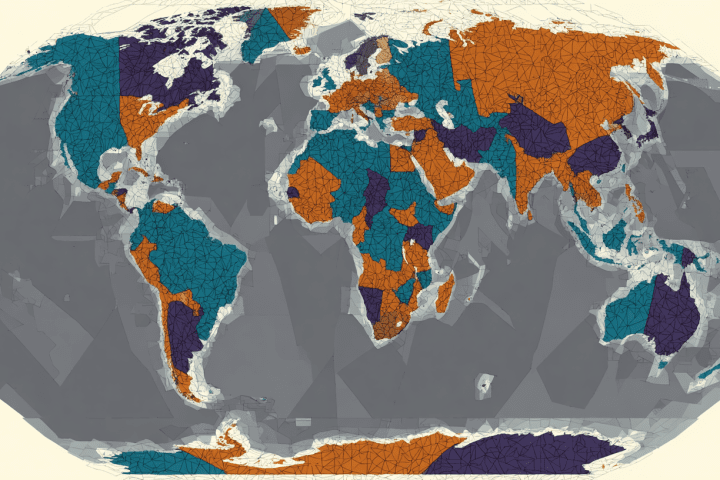In an increasingly interconnected world, cybersecurity has evolved from a technical concern into a fundamental pillar of national security, economic stability, and personal privacy. Digital threats no longer recognize boundaries between government operations, corporate infrastructure, and individual citizens—making cybersecurity everyone’s responsibility. Understanding the landscape of these threats and the strategies to counter them is essential for navigating our digital age safely and securely.
The Expanding Threat Landscape
The sophistication and scale of cyber threats have grown exponentially over the past decade. What began as isolated incidents of hacking and digital vandalism has transformed into a complex ecosystem of state-sponsored attacks, organized cybercrime, and ideologically motivated operations. The digitization of critical infrastructure, financial systems, and personal data has created an attack surface that expands daily.
Nation-state actors represent some of the most advanced persistent threats in cyberspace. Countries invest heavily in offensive cyber capabilities, targeting foreign governments, critical infrastructure, and private sector entities to gather intelligence, disrupt operations, or gain strategic advantages. These sophisticated operations often remain undetected for months or years, compromising sensitive information and undermining trust in digital systems.
Cybercriminal organizations have adopted business-like structures, offering ransomware-as-a-service platforms and specialized tools that lower the barrier to entry for malicious actors. The professionalization of cybercrime has led to more targeted, effective attacks that can cripple organizations and extort significant financial resources.
Government-Level Cybersecurity Challenges
Governments face unique cybersecurity challenges that extend beyond protecting their own networks. They must safeguard critical national infrastructure, defend democratic processes, and establish regulatory frameworks that balance security with privacy and innovation.
Critical Infrastructure Protection
Modern societies depend on interconnected systems controlling energy grids, water supplies, transportation networks, and communication infrastructure. These systems, increasingly managed through digital controls and internet-connected devices, present attractive targets for adversaries seeking to cause maximum disruption.
The Colonial Pipeline ransomware attack demonstrated how quickly cyber incidents can escalate into real-world crises affecting millions of citizens. Governments are now prioritizing critical infrastructure cybersecurity through:
- Mandatory security standards for operators of essential services, requiring baseline protections and incident reporting
- Public-private partnerships that facilitate information sharing about threats and vulnerabilities between government agencies and infrastructure operators
- Investment in resilience measures that ensure rapid recovery from cyber incidents, including backup systems and incident response protocols
- International cooperation frameworks addressing cross-border infrastructure dependencies and coordinated threat responses
Electoral Security and Democratic Integrity
Digital threats to electoral systems and democratic processes have emerged as existential concerns for governments worldwide. Foreign interference campaigns leveraging social media manipulation, disinformation, and direct attacks on voting infrastructure threaten the legitimacy of democratic institutions.
Election security now encompasses multiple dimensions: protecting voter registration databases, securing voting machines and tabulation systems, combating disinformation campaigns, and maintaining public confidence in electoral outcomes. Governments are implementing comprehensive strategies including paper ballot backups, enhanced cybersecurity for election systems, and rapid response teams to counter disinformation.
Intelligence and Military Operations
Military and intelligence agencies operate in an environment where cyber capabilities are as critical as conventional weapons. Offensive cyber operations can disable enemy command systems, disrupt logistics, and gather strategic intelligence. Defensive capabilities must protect classified information, secure communications, and maintain operational readiness against sophisticated adversaries.
The challenge extends to protecting defense contractors and supply chains that support military operations. Adversaries increasingly target these less-hardened entities as pathways into more secure government networks, requiring comprehensive security approaches that extend beyond traditional organizational boundaries.
Corporate Cybersecurity Imperatives
Businesses face relentless cyber threats that can result in financial losses, reputational damage, intellectual property theft, and operational disruption. The corporate cybersecurity landscape has evolved significantly as threats have grown more sophisticated and regulatory requirements more stringent.
Ransomware’s Escalating Impact
Ransomware has emerged as one of the most significant cyber threats to businesses of all sizes. Modern ransomware operations employ double-extortion tactics, encrypting data while simultaneously exfiltrating sensitive information to pressure victims into paying. Some attacks now include triple-extortion elements, threatening customers or partners of the targeted organization.
The financial impact extends beyond ransom payments to include:
- Operational downtime: Business interruption costs often exceed ransom amounts, with critical systems offline for days or weeks during recovery efforts.
- Data recovery expenses: Rebuilding compromised systems, restoring from backups, and validating data integrity requires significant technical resources and time.
- Regulatory penalties: Organizations failing to protect personal data face substantial fines under regulations like GDPR, CCPA, and sector-specific compliance requirements.
- Reputational damage: Public disclosure of breaches erodes customer trust, potentially resulting in long-term business losses that dwarf immediate incident costs.
- Legal liabilities: Class-action lawsuits and contractual penalties from partners affected by security failures create ongoing financial exposure.
Supply Chain Vulnerabilities
The SolarWinds breach highlighted how supply chain compromises can provide access to thousands of organizations through a single point of failure. Attackers increasingly target software vendors, cloud service providers, and other technology suppliers as efficient pathways to multiple victims.
Organizations must now evaluate the security posture of their entire technology ecosystem, implementing vendor risk management programs, software supply chain verification, and continuous monitoring of third-party access to sensitive systems. This represents a fundamental shift from perimeter-based security to comprehensive trust verification across all components and relationships.
Insider Threats and Human Factors
While external attacks dominate headlines, insider threats—whether malicious or unintentional—remain a critical vulnerability. Employees with legitimate access can cause catastrophic damage through negligence, social engineering manipulation, or deliberate malicious action.
Effective insider threat programs combine technical controls with organizational culture, including access management based on least-privilege principles, behavioral analytics to detect anomalous activities, and security awareness training that helps employees recognize and report potential threats.
Individual Citizens in the Crosshairs
Cybersecurity is no longer solely an organizational concern—individual citizens face direct threats to their financial security, personal privacy, and digital identity. The proliferation of connected devices, online services, and digital payment systems has expanded the attack surface reaching into every household.
Financial Fraud and Identity Theft
Personal financial information remains a prime target for cybercriminals. Sophisticated phishing campaigns, credential stuffing attacks using breached password databases, and banking trojans designed to intercept financial transactions threaten individuals’ economic security daily.
Identity theft has evolved beyond simple credit card fraud to encompass comprehensive identity takeovers where criminals assume victims’ complete digital personas. This can result in fraudulent loans, tax refund theft, medical identity fraud, and years of remediation efforts for victims.
Privacy Erosion and Data Exploitation
Citizens generate vast amounts of personal data through daily digital interactions—social media activity, online purchases, location tracking, health monitoring devices, and smart home systems. This data, when aggregated and analyzed, reveals intimate details about individuals’ lives, preferences, and behaviors.
Data brokers, advertisers, and malicious actors all seek to exploit this information. While legitimate businesses use data for targeted marketing, criminals leverage it for sophisticated social engineering attacks, while authoritarian governments may use it for surveillance and control. The complex dynamics shaping global affairs increasingly include these digital privacy considerations as nations debate data sovereignty and cross-border information flows.
Social Engineering and Manipulation
The human element remains the weakest link in cybersecurity. Social engineering attacks exploit psychological vulnerabilities rather than technical flaws, manipulating individuals into divulging sensitive information or performing actions that compromise security.
Modern social engineering encompasses:
- Phishing and spear-phishing: Fraudulent communications designed to trick recipients into revealing credentials, downloading malware, or authorizing financial transactions
- Vishing and smishing: Voice and SMS-based attacks that leverage urgency and authority to bypass critical thinking
- Pretexting: Elaborate scenarios where attackers impersonate trusted entities to gain information or access
- Deepfake technology: AI-generated audio and video that can convincingly impersonate executives, family members, or public figures for fraud or manipulation
Building Comprehensive Cyber Resilience
Addressing the full spectrum of cyber threats requires coordinated action across government, corporate, and individual levels. No single entity can secure the digital ecosystem alone—collective resilience emerges from shared responsibility and coordinated efforts.
Government Policy and International Cooperation
Effective cybersecurity policy must balance multiple competing interests: security versus privacy, innovation versus regulation, national sovereignty versus international cooperation. Governments are developing comprehensive frameworks that include:
- Mandatory breach disclosure requirements ensuring transparency about security incidents
- Cybersecurity standards for critical sectors establishing baseline protections
- Law enforcement capabilities to investigate and prosecute cybercrime across borders
- Diplomatic efforts establishing norms for responsible state behavior in cyberspace
- Investment in cybersecurity workforce development to address talent shortages
International cooperation remains essential, as cyber threats ignore national boundaries. Treaties, information-sharing agreements, and coordinated responses to major incidents strengthen collective defense while respecting sovereignty concerns.
Corporate Security Transformation
Organizations must evolve from reactive security postures to proactive, adaptive approaches. This transformation includes implementing zero-trust architectures that verify every access request, adopting security-by-design principles in product development, and building incident response capabilities that enable rapid recovery.
Board-level engagement with cybersecurity has become essential, with security considerations integrated into strategic planning and risk management. The recognition that cybersecurity is a business enabler rather than purely a cost center is driving more appropriate resource allocation and executive attention.
Empowering Individual Security
Citizens must develop digital literacy and security awareness as fundamental life skills. Educational initiatives should emphasize practical security measures including strong, unique passwords for each service, multi-factor authentication adoption, cautious evaluation of unsolicited communications, and regular software updates.
Privacy-enhancing technologies—encrypted messaging, virtual private networks, privacy-focused browsers—provide individuals with tools to protect their digital lives. However, usability remains crucial; security measures too complex for average users to implement effectively provide little real protection.
The Path Forward
The cybersecurity landscape will continue evolving as technology advances and threat actors adapt. Emerging technologies like quantum computing promise both enhanced security capabilities and new vulnerabilities. Artificial intelligence offers powerful defensive tools while simultaneously enabling more sophisticated attacks.
Success requires sustained commitment to security as a shared priority. Governments must provide clear regulatory frameworks and lead by example in protecting their own systems. Corporations must invest appropriately in security and treat it as a competitive differentiator and trust builder. Citizens must take personal responsibility for their digital security while demanding accountability from service providers.
The digital threats facing governments, businesses, and citizens are real and growing. Yet with coordinated effort, appropriate investment, and sustained attention, we can build a digital ecosystem that is resilient, trustworthy, and secure. The challenge is significant, but the alternative—allowing cyber threats to undermine the digital systems on which modern society depends—is unacceptable.
Cybersecurity is not a destination but an ongoing journey requiring vigilance, adaptation, and collaboration across all levels of society. By understanding the threats we face and implementing comprehensive defenses, we can realize the immense benefits of our digital age while managing its inherent risks.

















